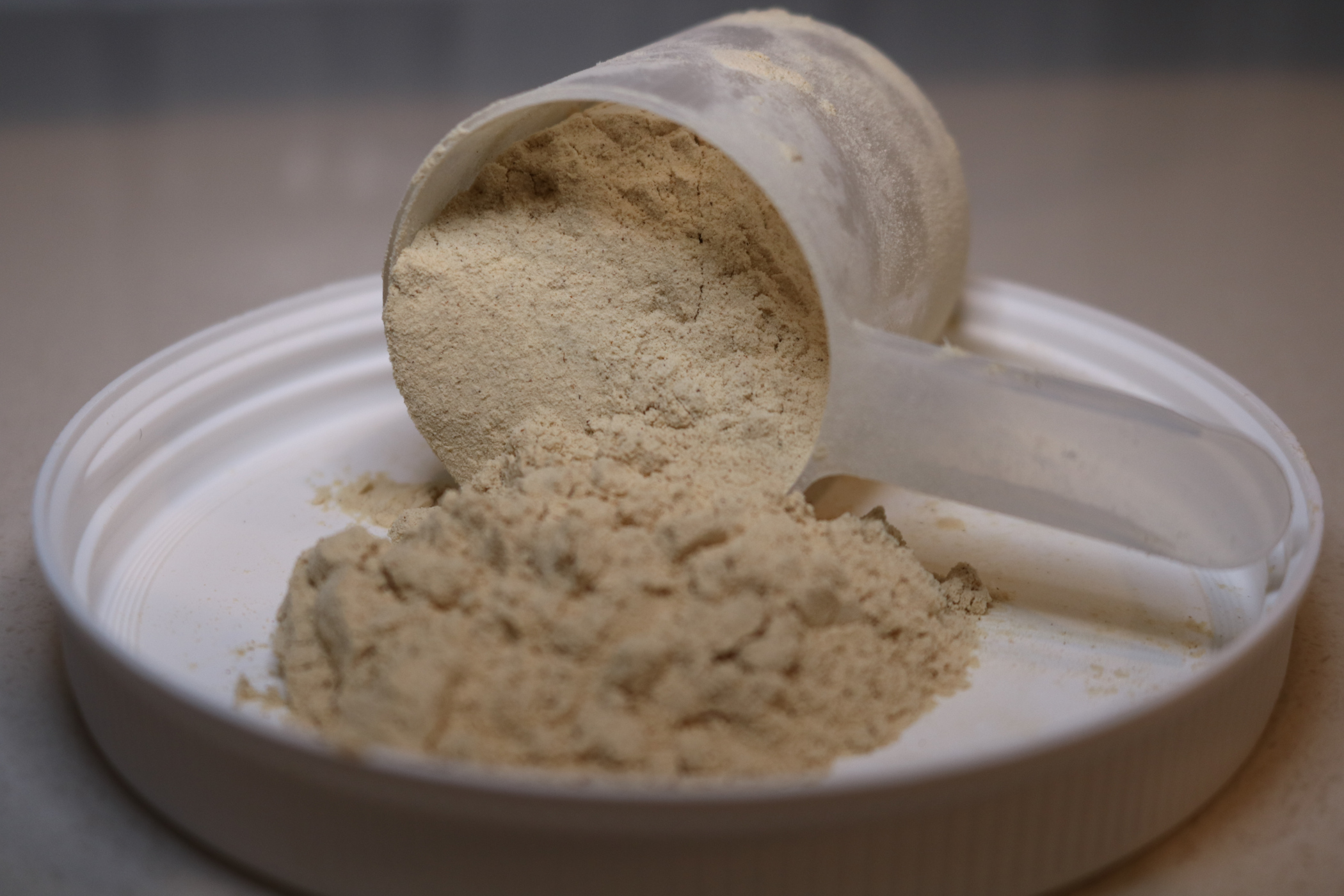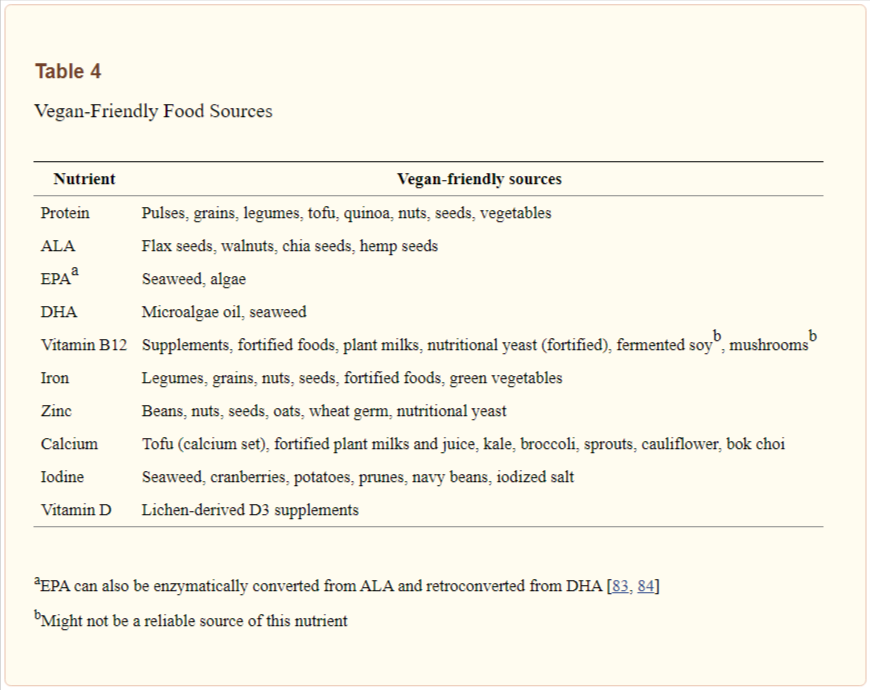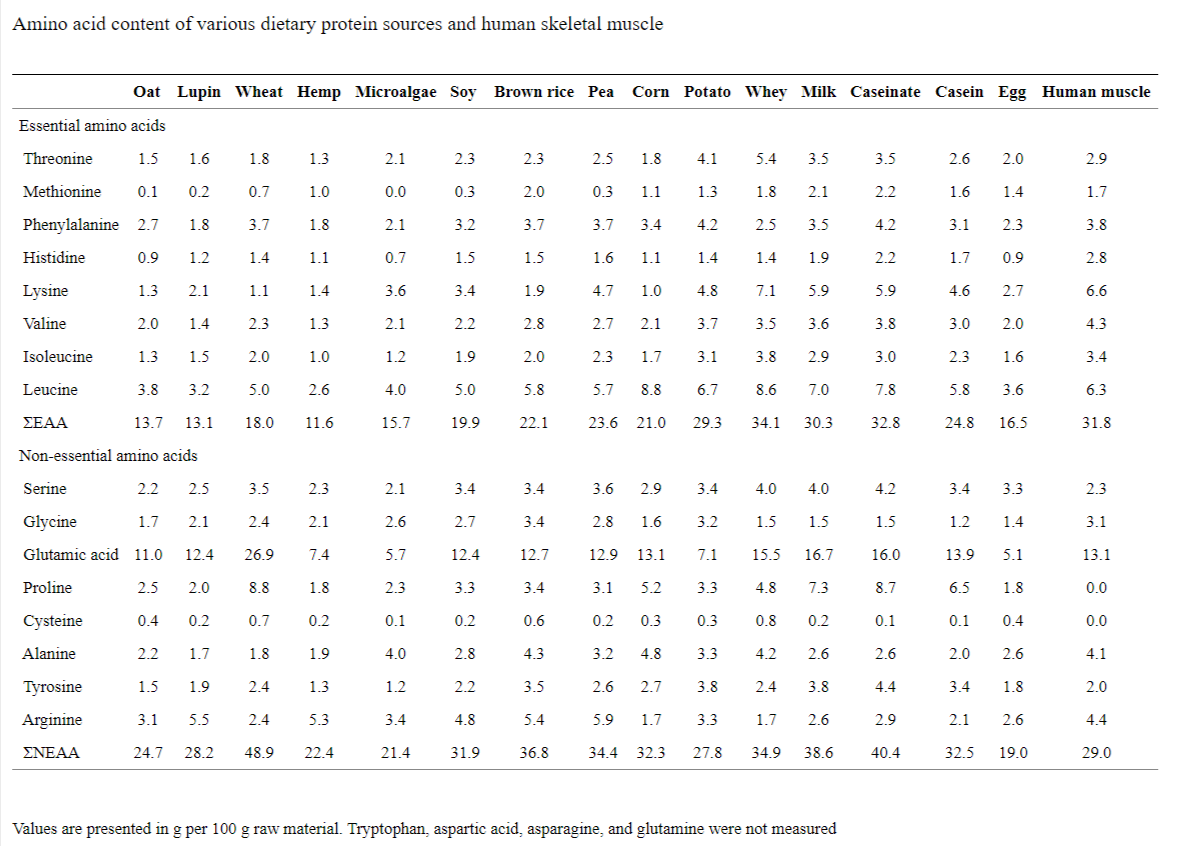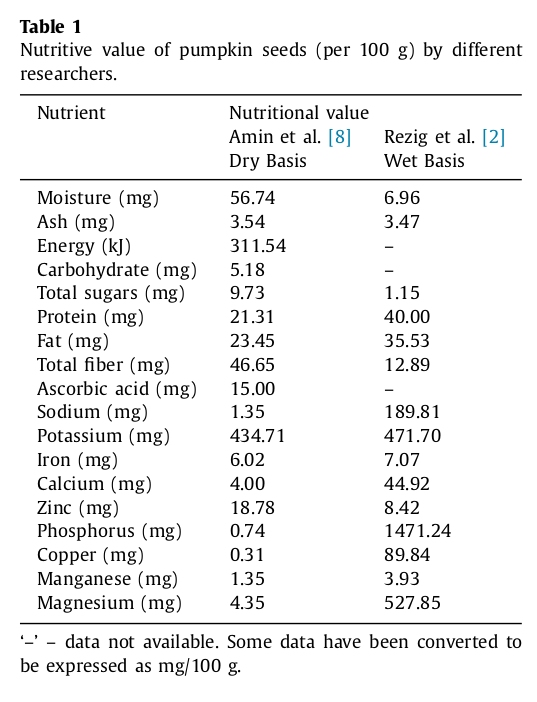We've seen protein powders improve on multiple fronts, with flavoring often being the most obvious and exciting. Innovation in regards to the creation of protein powders, however, is unrightfully overlooked. Higher-quality ingredients and better manufacturing practices deserve their fair shine, too, as do improvements in sourcing the proteins that make up a powder -- especially when it comes to plant proteins.
How can we make vegan proteins better?

Pumpkin seeds are rich in protein and several other nutrients - and when you extract them properly, you can get an incredible plant protein source!
Protein powders are one of the foundational groups in the supplement industry. Despite their status as a well-established category, they're still subject to innovation.
The growing popularity of vegan and plant-based diets has increased the demand for plant-based protein powders to help supplement overall protein intake. Powders based on plant sources like soy, pea, and rice have led this push, though they've generally failed to reach the quality of whey protein, the most common type of protein powder available. Plant proteins have grown wildly in popularity, but still present plenty of room for improvement. The opportunities exist in terms of sourcing, taste, and texture.
Yes -- with pumpkin seed protein
Pumpkin seed protein may just be the best innovation yet, representing the pinnacle of plant-based proteins in terms of quality and experience. Delivering a strong amino acid profile that rivals other vegan competitors, while also competing with whey in terms of taste and texture, pumpkin seed protein finally provides a plant-based protein powder option that goes toe-to-toe with our beloved dairy-based proteins.
In this post, we're going to cover all there is to know about pumpkin seed protein: what it is, how it stacks up against other plant-based proteins, and why it might ultimately be used to create a vegan protein worthy of a spot close to whey.
Before we get going, make sure you're subscribed to PricePlow for our supplement news and deal alerts. Also, head over to our YouTube and Instagram pages for some awesome content, including product reviews, industry interviews, and the occasional Q&A.
Subscribe to PricePlow's Newsletter and Pumpkin Seed Protein Alerts
Plant proteins — a growing market in sports supplements
Regardless of your type of diet, one thing is nearly universal for dieters, athletes, and aging consumers: high-protein diets reign supreme (with the exception of very few medical corner cases).

Plant protein powder has come a long way, but there's still room for improvement. Image copyright PricePlow
The prevalence of the plant-based diet is high - according to IPSOS, veganism has grown in the U.S. from roughly 290,000 people in 2004 to 9.7 million in 2019.[1] This expansion is astounding, and whether it's driven by the quest environmental sustainability, moral reasons, or the establishment media push misses the point. Plant-based diets are a huge deal these days, and as such, so are the markets for plant-based nutrition.
On one hand, research has shown that increasing your daily intake of fruits and vegetables not only provide more antioxidants and vitamins to the body,[2] but may also help fight obesity,[3,4] reduce risk factors of disease,[4] and improve general health.[5]
The common plant-based diet nutritional deficiencies, leading with protein
On the other hand, plant-based diets commonly lead to numerous deficiencies that must be supplemented or carefully planned around[6-12] - doubly so for athletes.[7] For instance, following a plant-based diet also raises the risk of dangerously low vitamin B12, vitamin D, omega-3 fatty acids, calcium, and iron.[6] Perhaps the most serious nutritional gap of all is that plant-based diets are often far too low in protein. These are serious problems that need to be solved, especially given the major issues that arise with low protein intake.[13-15]

A list of common deficiencies in vegan diets and how to overcome them. If you're a vegan and not eating foods like this on a regular basis, you must supplement for optimal health.[7]
The human body needs protein to function. If you're at all interested in sports nutrition, you understand how important protein consumption is to athletic performance and recovery.[16] It's an essential nutrient, though one that's found less abundantly in plant-based foods. These foods do contain protein, but the quality, digestibility, and absorption of plant-based protein sources generally pale in comparison to animal-based foods.[17]
An individual looking to hit their daily protein intake will likely have a tougher time doing so without eating meat or dairy. Additionally, some lack enough essential amino acids (EAAs) to be deemed a complete protein, failing to provide the full-spectrum amino acid profile of most animal-based proteins. All of these deficiencies can be addressed, of course, and sports supplements provide an excellent way to do so in plant-based protein powders.
Plant proteins in supplements
In the world of plant-based foods, whole grains, nuts, seeds, beans, lentils, and soy find themselves among the richest sources of protein. As such, plant-based protein supplements are often derived from these foods — powders and other products utilizing proteins from soy, peas, and brown rice are common not only in supermarkets but across the sports supplement industry at large.
Though not as common as your everyday whey protein powder, plant-based proteins are generally higher in vitamins and minerals, antioxidants, and fiber. However, these auxiliary benefits don't quite make up for the issues that different plant proteins present.
-
Soy protein contains phytoestrogens, compounds that mimic estrogen to a degree and can impact endocrine function.[18] Soy generally contains phytates, as well, which can affect the bioavailability of nutrients like iron and zinc.[19] Science remains inconclusive on whether or not these compounds are significantly problematic in humans, but nonetheless, the potential of adverse effects supports the need for some level of caution, especially since it's a common allergen to boot. Soy is also not considered a complete protein,[20] due to its low methionine content.
-
Pea protein carries all nine EAAs but is still rather low in methionine and cysteine. According to a 2018 study published by Amino Acids, pea protein has only ~30% EAA content and arguably falls short of being classified as a complete protein due to its low methionine levels.[20]
-
Brown rice is also not considered a complete protein, as it contains only ~28% EAA content and low lysine content.[20]
Additionally, brown rice protein presents a risk of being contaminated with lead,[21] which can be toxic to the body. The chance of contamination can be elevated when brown rice protein is combined with cocoa, which is frequently used for flavoring and also may contain lead.[22] It's important to note that this potential toxicity relates to the quality of the product in question — not all brown rice proteins (or cocoa-infused products) contain lead.
You'll often see rice protein mixed with pea protein, as the two can balance each others' shortcomings.

C8Vantage (C8 MCT Powder) is one way formulators can reduce the grit in their plant proteins. But why not also use a smoother protein blend in the first place?
Though some of the potential issues with plant-based protein powders depend on the manufacturing practices used to create a given product, some are also inherent in the protein source itself. Not only that, but plant-based powders also fall short of their whey-based compatriots in terms of pleasantness and mouthfeel. Consumers frequently report a gritty texture, lacking the "creaminess" other protein powders deliver, in addition to sometimes leaving a bad aftertaste and smell.
Even pea protein and brown rice protein, which have led the plant-based protein market for the past few years thanks to relatively superior combined amino acid profiles, don't fully measure up to animal-based protein powders. Oftentimes, the two are combined to form a complete protein, but even then, the experience (and potential risks in manufacturing) still leave it somewhat lacking. Thus, the search for a plant-based source of this muscle-building macronutrient that rivals whey goes on...or does it?
Pumpkin seed protein — the king of plant proteins?
Pumpkin seed protein may be a relative newcomer to the plant-based protein game, but that doesn't mean it shouldn't be taken seriously. In fact, there's a chance it might just be one of the better options in the vegan protein market, despite sharing in a few of the pitfalls of its plant-based cousins.
Protein derived from pumpkin seeds is similar to both pea and brown rice in that it's not quite a complete protein. It's rather low in lysine and threonine, two of the nine EAAs.[23] So while it still is best used as part of a blend to ensure a sufficient supply of all the EAAs, pumpkin seed protein brings a few things to the table with respect to nutrition and experience that potentially raise it above other alternatives.
From a nutritional standpoint, pumpkin seeds are loaded with essential vitamins, minerals, and healthy fatty acids that are crucial to our overall health. Despite delivering respectable amounts of calcium and potassium, its high content of zinc, magnesium, and iron are particularly noteworthy. These three nutrients work together to improve immune health, hormone production, and even sleep quality.[24] Additionally, it's not uncommon for vegans to be deficient in zinc and iron,[25] giving even more importance to their presence in pumpkin seeds. Considering its potency in essential fatty acids like omega-3 and other antioxidants like vitamin K and vitamin E,[26] pumpkin seeds pack quite a nutritional punch.
Where things get really interesting, however, is in the experience of using a protein powder derived from pumpkin seeds. When manufactured properly, pumpkin seed protein powder is notably smoother and creamier than other plant proteins, superior at mimicking the texture and mouthfeel of a dairy-based powder than other vegan options. While most vegan proteins are written off for their grainy texture, pumpkin seed protein seems capable of avoiding such a fate. However, the importance of how it's created cannot be understated.
Watch out for dregs...
The manufacturing processes and sourcing used to create products ultimately drive its quality, a notion that's especially accurate within sports supplements. Just as this is the case in whey protein powders and pre-workouts, not all pumpkin seed protein powders are created equal.
Pumpkin seeds are commonly leveraged for the health benefits their impressive nutritional profile delivers via its oil — research suggests that pumpkin seed oil has the potential to improve heart health,[28] mental health,[29] and lower inflammation, among other things. To isolate these oils, pumpkin seeds are roasted and cold-pressed, yielding two products: oil and a mixture of everything else, called dregs. Essentially the byproduct of oil manufacturing, dregs are a low-quality mixture of pumpkin seeds, an afterthought containing fibers, proteins, meals, and possibly even pathogens introduced during the pressing process. Unfortunately, there's nothing keeping dregs from being sold off and further processed elsewhere for other uses, such as for protein powder.
Pumpkin seed protein powder made from dregs is extremely low-quality. It lacks most of the nutrients pumpkin seeds are praised for and is at risk of being contaminated. Though it still delivers nitrogen-based protein, it does so with a poor taste and texture. These are the kinds of things that can happen when a product is made from the waste of another. Thankfully, pumpkin seed protein doesn't have to be made this way!
Instead of trying to manufacture a protein powder out of what's essentially a waste product, why not flip the script and prioritize the protein first? In taking the raw seed and extracting its protein content, you get not only a protein that's of a higher quality, but also one that holds onto much of the nutrients that make pumpkin seeds a powerhouse in the first place. This is the kind of pumpkin seed protein that has the potential to change the market for vegan and dairy-free proteins, delivering effective, plant-based nutrition with an experience on-par to other non-vegan proteins.
Luckily, there are formulators in the industry that understand the difference in quality inherent in the manufacturing of pumpkin seed proteins. Their powders — which derive its protein from the seed, not some byproduct — are the ones that make pumpkin seed proteins a force to be reckoned with in the protein powder market.
Conclusion: Perfect plant proteins with pumpkin seeds
Long gone are the days of just whey protein isolate and whey protein concentrate when it comes to protein powders. Whether due to dietary restrictions, lifestyle choices, or just a plain old desire for something different, vegan proteins have arrived and are here to stay. We've seen quite a few variants make some noise. Soy, pea, and brown rice are just a few,though each has its warts. Most vegan proteins are in short supply in some areas, with a low quality or a lacking EAA profile among the common pitfalls. Many of these powders deliver a grainy texture, too, which can turn off consumers. All of this combined forms a product that, though sufficient as a vegan protein, is by no means perfect and certainly doesn't measure up to animal-based alternatives.
This notion may be shifting with the rise of pumpkin seed protein. Packed full of essential vitamins, minerals, and, of course, protein, the seeds of everyone's favorite gourd can make a nutritionally-loaded vegan protein powder that remains smooth and creamy when mixed into a shake. It's certainly not perfect — it lacks sufficient amounts of a couple EAAs, as does pea protein — but in isolation, a superior experience makes it a worthy rival. Used in conjunction with pea and brown rice protein, however, and you might just have a full-fledged vegan protein that reaches the height of animal-based products like whey.
Be on the looking for a product that does what many other pumpkin seed protein powders fail to do: deliver a high-quality protein that carries the nutritional benefits that make pumpkin seeds a health-boosting powerhouse.
Say goodbye to that infamous grainy feel of the last vegan protein you gave a test — pumpkin seed protein powder is here to help deliver the great-tasting, creamy, effective vegan protein we've all been waiting for.





Comments and Discussion (Powered by the PricePlow Forum)